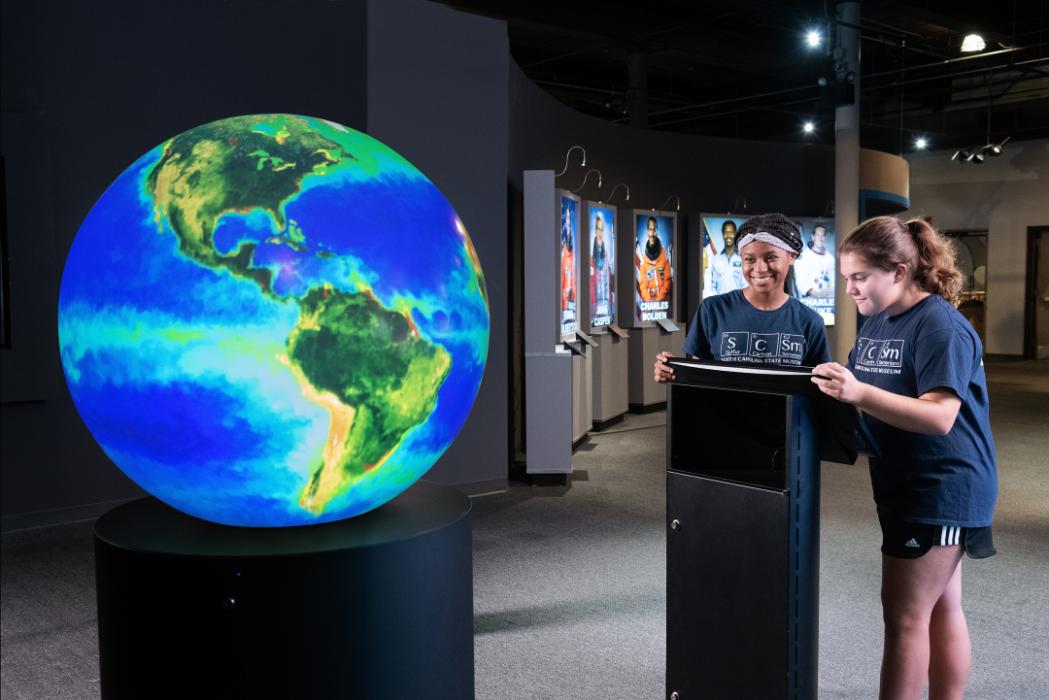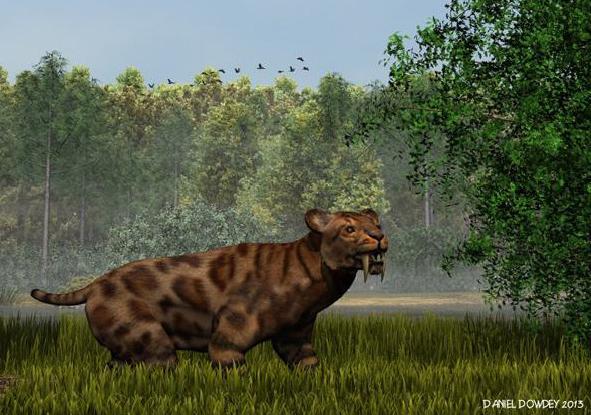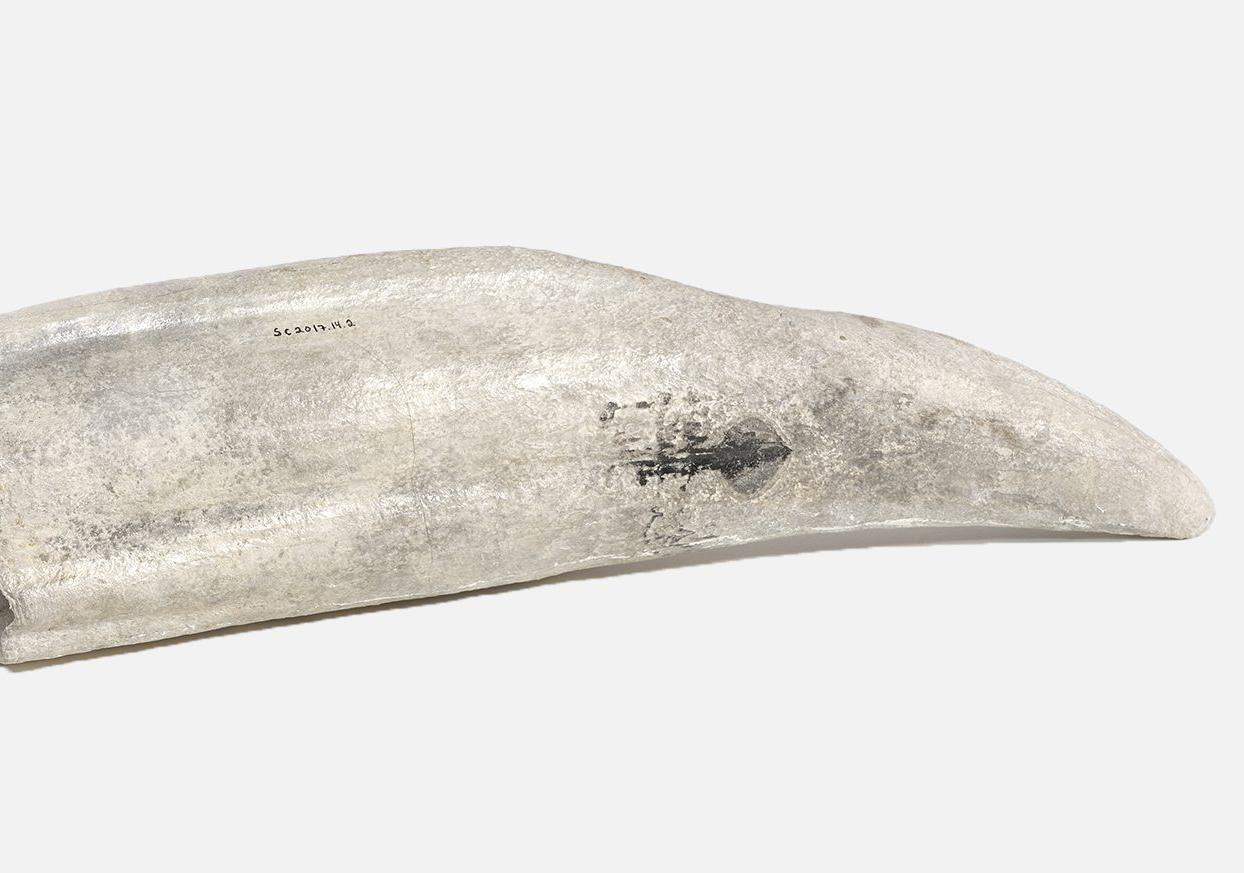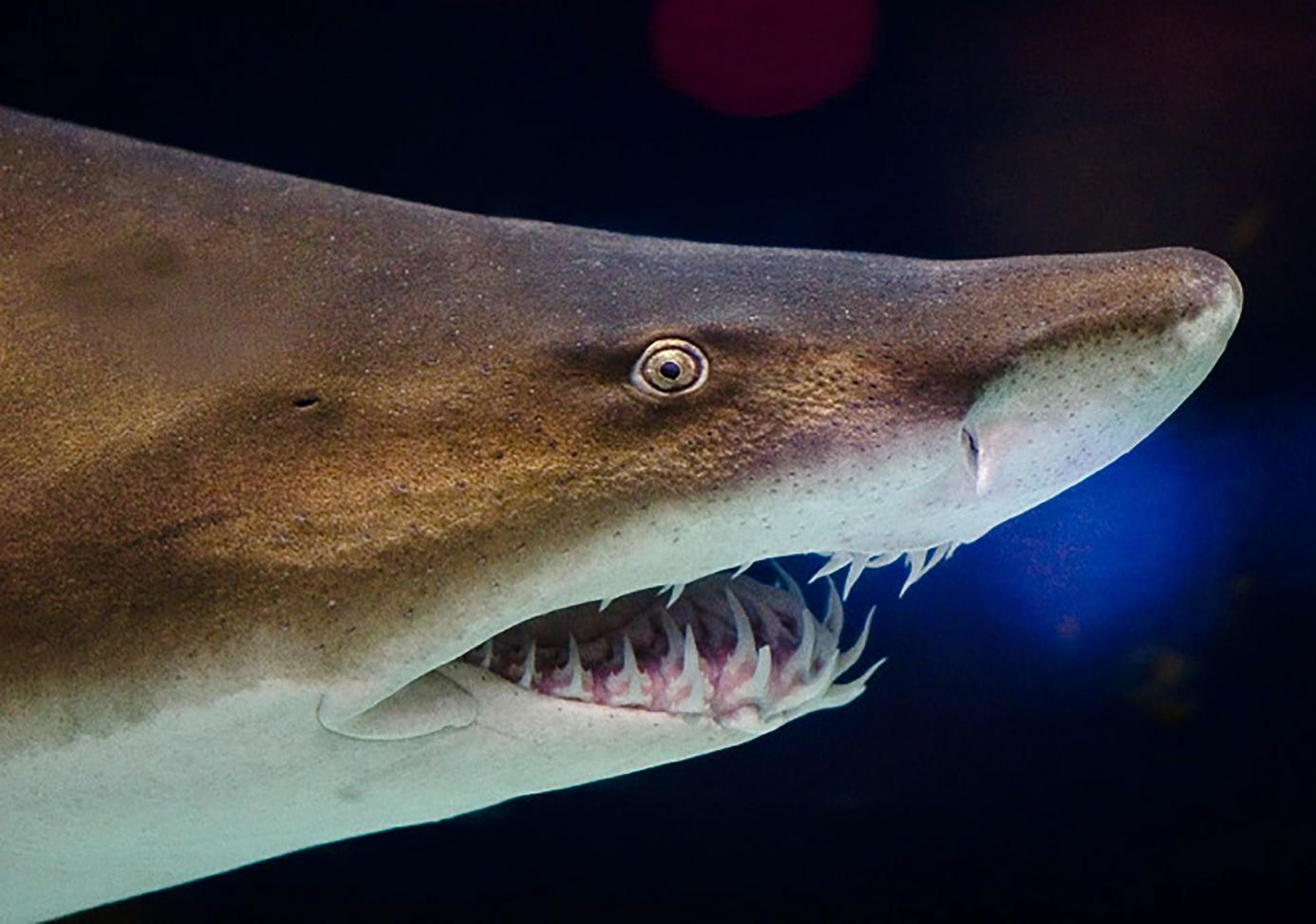
Discover Fossils and Specimens From Millions of Years in the Past
Reflecting the natural wonder of the state, the natural history collection at the South Carolina State Museum contains an estimated 1 million fossils and specimens.
The collection is organized into three major components: biology, geology and paleontology. The range of the collection includes arthropods that are more than 500 million years old, 70-million-year-old dinosaur bones, 40-million-year-old whales, 400,000-year-old bones from the Ice Age, and a host of taxidermy mounts of animals that currently inhabit the state.
Each object provides a detailed picture of what South Carolina looked like throughout its millions-year-old history. This diverse collection has resulted in the identification and naming of over a dozen new species of extinct rays, sharks, fish, whales and turtles.
Connect
New! Search the Collection Online
Please note: digitizing the museum's vast collection is an ongoing process. Much of the Natural History Collection is still being photographed and updated to be included in the online database at a later date. Users may see frequent entries without images.
Hey everybody I’m Dave Chichimori i'm the natural history curator here at the South Carolina State Museum. I had the opportunity recently to work with a colleague in Alabama where we described a new species of shark that we found in Louisiana, so I want to kind of give you a little bit of an idea of how we do that. So how do we find a fossil and determine that it's a new species.
So as a shark specialist, somebody who studies fossil teeth in particular, we don't know what the body look like of these fossil sharks because that's not preserved. Usually we find just their teeth so the teeth are the only thing that we have of that animal to figure out what it was.
So how is it that we can tell different sharks from one another just based on their teeth? If we take a look at this particular tooth here and you can see that it's a big triangular tooth and it has these big pointy cusps we call them on the side of the tooth and if we would zoom in you could see that the tooth is very well serrated.
If we compare that now to this tooth here this is something called Megaselachus chubutensis and it's a little bit broader than the tooth we just looked at and those little cusplits on the side are actually very small and the serrations are a little bit different yet they're more even as far as the size and the regularity on the tooth.
Now if we move to this one this is maybe something that everybody recognizes and this is kind of the end of the line of this lineage of what we call megatooth sharks and actually the two teeth that we saw before that are related to this their predecessors of this particular species you can see that the tooth is much larger very broad and it's missing these lateral cusplets. We use those different features, the broadness of the tooth, the serrations, the cusplits or not to determine that this particular tooth is different than that one as far as the different kinds of species.
So when we were in Louisiana. recently we saw a collection of fossil teeth that actually been collected 20 years before we were there to look at them. We looked at them and determined that the serrations, the shape of the tooth, the size of the tooth were different than any other species of what we thought were similar shark to that and we put a new name on it. The name of the new species is Carcharinus Tingae and Carcharinus is a genus of shark that's still around today. The dusky shark that we looked at earlier is a species of Carcharinus. Tingae a is actually the last name of somebody who worked at LSU, she was in the geology museum, she recently retired but she was somebody who studied fossils in Louisiana for about 20 years or so.
So what does this new discovery tell us so the particular shark? Carcharinus Tingae lived about 40 million years ago and based on the shape of the teeth we think that comparing that with modern sharks that have similar shaped teeth they were eating fish and it was probably about six feet long or so. So finding this particular new species gives us a better idea of what was going on in the ancient gulf of Mexico at the time and then when we compare what we know from 40 million years ago to maybe 20 million years ago and today we can see how the flora and fauna the animals and plants that maybe lived in the gulf of Mexico have changed over that great expanse of time. Now in South Carolina we don't know that Carcharinus Tingae lived here we just haven't found their fossils yet so we're not quite sure if that shark didn't actually live here or we just haven't found rocks of the right age or just simply haven't found their teeth yet so we're still out there we're still looking and hopefully one of these days we find some more things and we know more about where that animal lived at that particular time. Although we don't have fossils of Carcharinus Tingae here at the South Carolina state museum and you can come by and visit us to see our model of Megaselachus chubutensis. We have a model of great white up there and a lot of other fossil shark teeth to see. We actually have a few other exciting discoveries in the works that we can't wait to share with you soon

Research Paper Collection
Discover more by exploring academic work developed by museum curators, collaborators, educators, and more.












